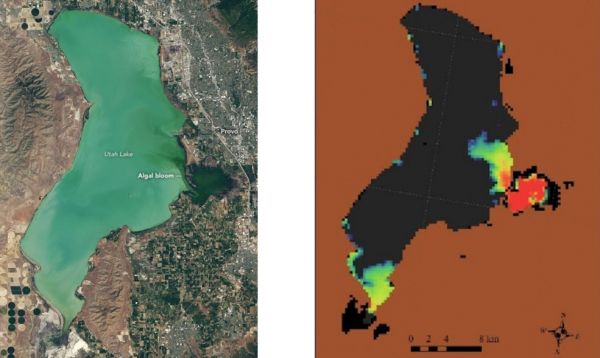The use of NASA satellite data by environmental managers tracking harmful algal bloom outbreaks along lakefronts and coasts can result in earlier detections that yield significant savings on healthcare, lost work hours and other economic costs.
A NASA-funded case study published last month in the journal GeoHealth reviewed a 2017 algal bloom in Utah Lake near Provo, Utah. It showed that satellite data help lead to earlier warnings of hazardous algae than other detection approaches, and in this case, the earlier notice resulted in approximately $370,000 in savings.
"Using satellite data to detect this harmful algal bloom potentially saved hundreds of thousands of dollars in social costs by preventing hundreds of cases of cyanobacteria-induced illness," said study coauthor Molly Robertson, a research assistant at the non-profit research group Resources for the Future (RFF). The analysis is the work of the VALUABLES Consortium, a collaboration of RFF and NASA.
Continue reading at NASA
Image via NASA


